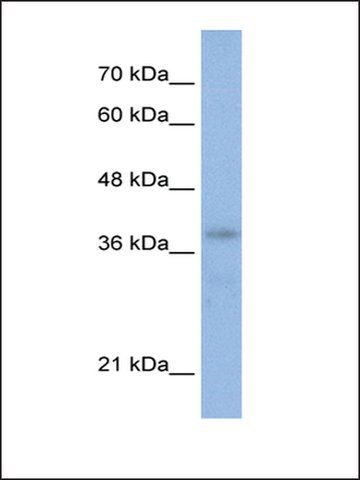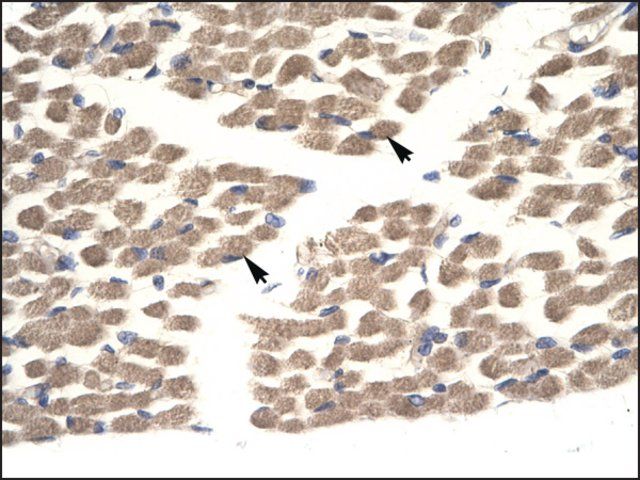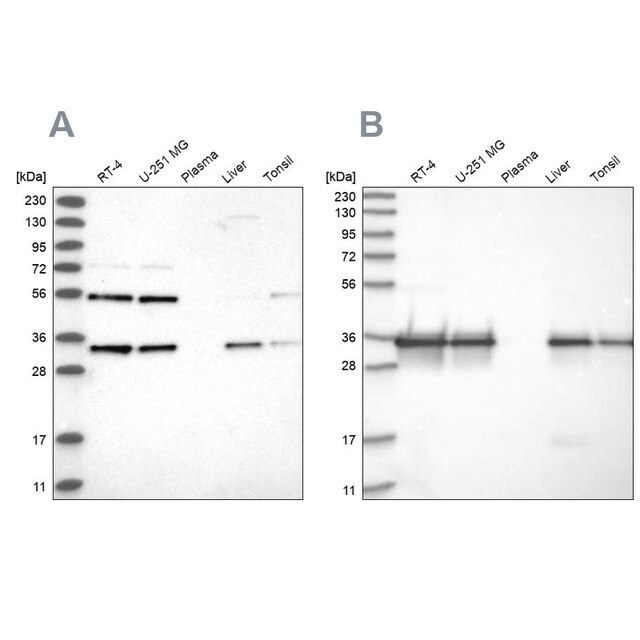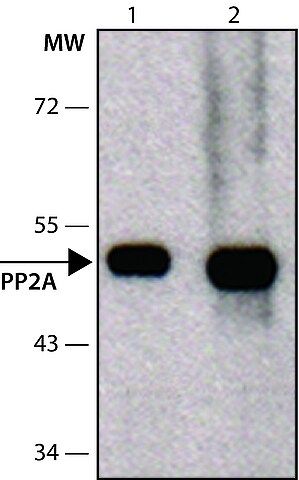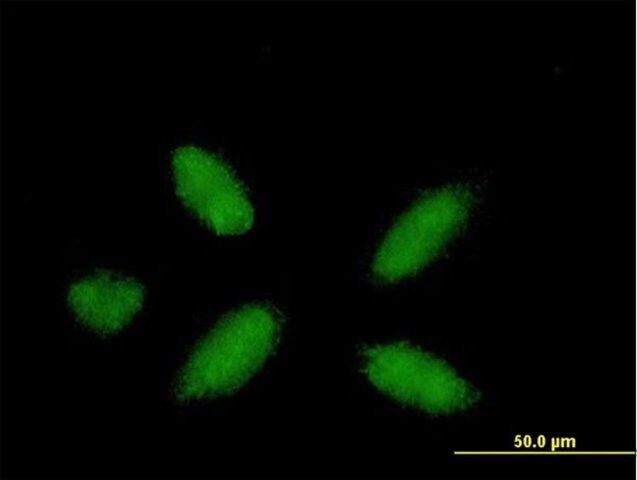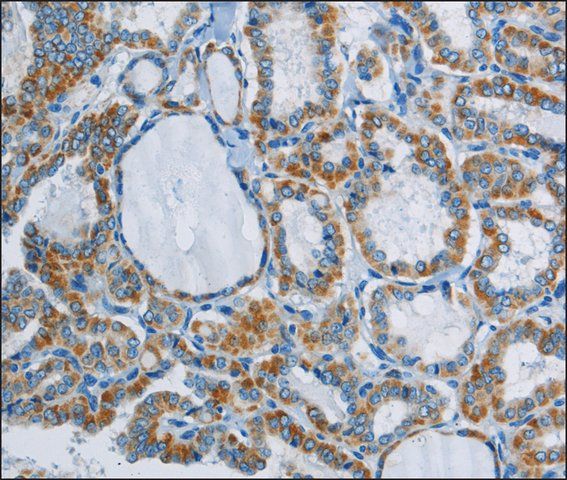产品说明
一般描述
Huntington’s disease (HD) belongs to a family of polyglutamine diseases, which includes dentatorubralpallidoluysian atrophy (DRPLA), spinobulbar muscular atrophy (SBMA) and spinocerebellar ataxia (SCA) types 1–3, 6, 7 and 17. In these diseases, the non-pathogenic alleles contain fewer than approximately 35 consecutive glutamine repeats and encode a normal polyglutamine domain. In contrast, the pathogenic alleles usually contain 39 or more consecutive glutamine repeats. Higher repeat numbers lead to lower ages of onset. Patients with 40-60 glutamine repeats normally develop disease as adults, whereas patients with more than 60 repeats develop a juvenile onset disease. Each polyglutamine expansion disorder displays characteristic pathology, with neuronal loss evident in specific regions of the brain. HD results from expansions of a glutamine tract in a large cystolic protein known as huntingtin.
特异性
The epitope of MAB1574 was found to be a homopolymeric glutamine stretch. The original immunogen was the general transcription factor TATA Box-binding protein (TBP) which contains a 38-glns stretch (Lescure et al). Other polyglutamine-containing proteins are recognized by the MAB1574, notably those involved in several human neurodegenerative diseases caused by a CAG repeat expansion, like Huntington′s disease and spinocerebellar ataxia type 2, 3 and 7 (Trottier et al., 1995). Importantly, for proteins involved in these neurodegenerative disorders, MAB1574 showed remarkable property of detecting much better the pathological proteins that contain a polyglutamine expansion (37 glns) than the wild type proteins (Trottier et al., 1995). MAB1574 has been used to identify new neurodegenerative diseases caused by polyglutamine expansion and to help for cloning of the corresponding affected genes (Trottier 1995-1998; Imbert 1996; Stevanin 1996). MAB1574 is also able to detect intracellular inclusions, which is a hallmark of such diseases (Paulson, 1997).
免疫原
N-terminal part of the human TATA Box Binding Protein (TBP).
应用
Research Category
Neuroscience
ELISA: 1:1,000-1:20,000
Western Blot: 1:1,000-1:20,000
Immunohistochemistry on frozen and paraffin sections (human tissue): 1:1,000-1:20,000
Immunocytochemistry on transfected cells: 1:1,000-1:20,000 Immunoprecipitation: 1:1,000-1:20,000
Optimal working dilutions must be determined by end user.
Research Sub Category
Neurodegenerative Diseases
Anti-Polyglutamine-Expansion Diseases Marker Antibody, clone 5TF1-1C2 is an antibody against Polyglutamine-Expansion Diseases Marker for use in ELISA, IC, IH(P), IP & WB.
外形
Unpurified
Ascites fluid containing no preservatives.
储存及稳定性
Maintain for 1 year at -20°C from date of shipment. Aliquot to avoid repeated freezing and thawing. For maximum recovery of product, centrifuge the original vial after thawing and prior to removing the cap.
分析说明
Control
Huntigton′s Disease brain
其他说明
Concentration: Please refer to the Certificate of Analysis for the lot-specific concentration.
法律信息
CHEMICON is a registered trademark of Merck KGaA, Darmstadt, Germany
免责声明
Unless otherwise stated in our catalog or other company documentation accompanying the product(s), our products are intended for research use only and are not to be used for any other purpose, which includes but is not limited to, unauthorized commercial uses, in vitro diagnostic uses, ex vivo or in vivo therapeutic uses or any type of consumption or application to humans or animals.
基本信息
| eCl@ss | 32160702 |
| NACRES | NA.41 |
产品性质
| 质量水平 | 100 |
| 生物来源 | mouse |
| 抗体形式 | ascites fluid |
| antibody product type | primary antibodies |
| 克隆 | 5TF1-1C2, monoclonal |
| species reactivity | human |
| manufacturer/tradename | Chemicon® |
| technique(s) | ELISA: suitable immunocytochemistry: suitable immunohistochemistry: suitable (paraffin) immunoprecipitation (IP): suitable western blot: suitable |
| 同位素/亚型 | IgG1κ |
| 运输 | dry ice |
安全信息
| 储存分类代码 | 10 - Combustible liquids |
| WGK | WGK 1 |
| 闪点(F) | Not applicable |
| 闪点(C) | Not applicable |






